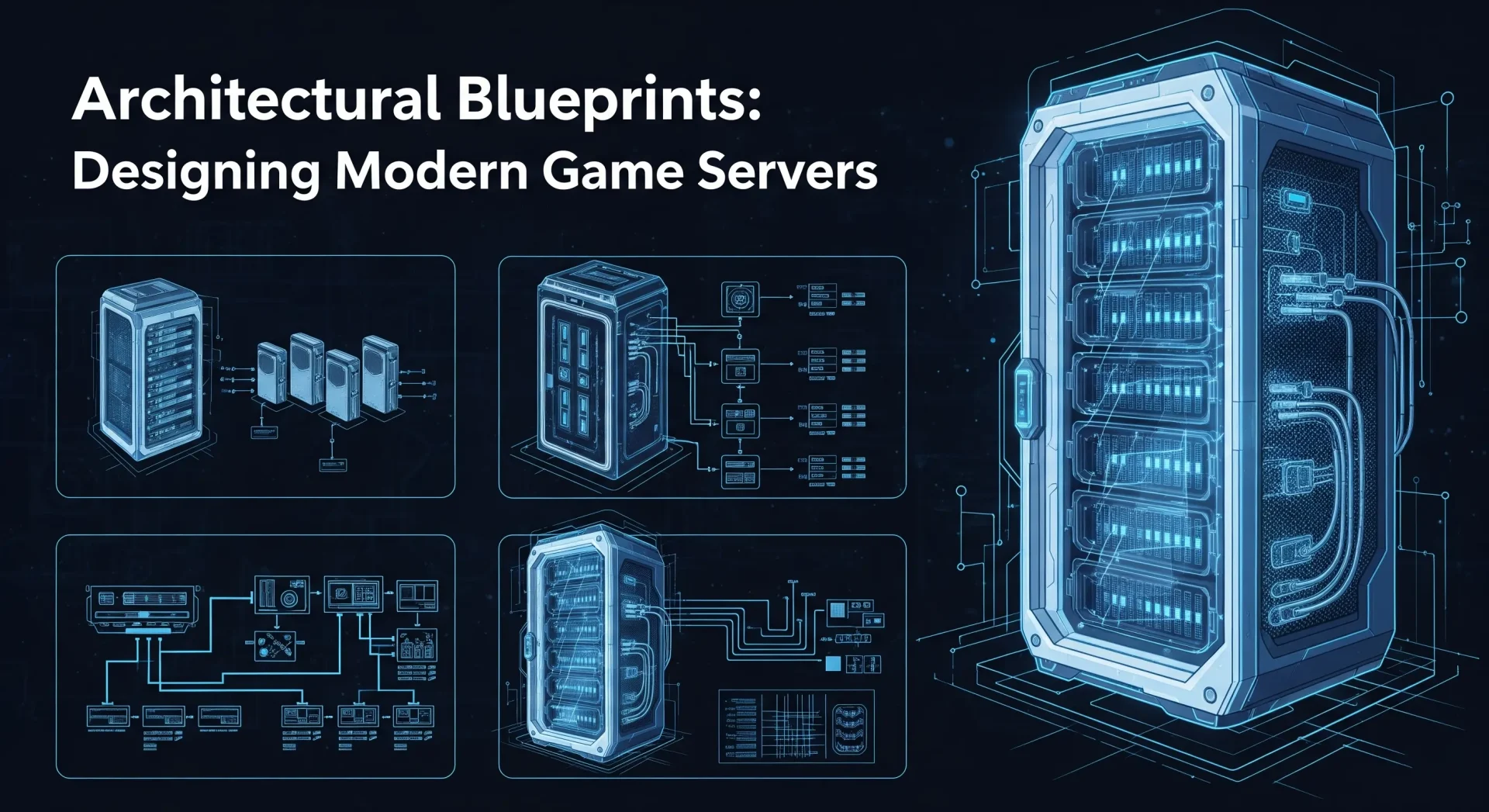A Deep Dive into Game Servers Heart of Online Gaming
In the sprawling, vibrant universe of online multiplayer games, where millions of players connect, compete, and collaborate every second, there exists a silent, unseen workhorse that makes it all possible: the game server. This unassuming powerhouse is the linchpin of our shared digital experiences, the arbiter of virtual worlds, and the conductor of an intricate symphony of data that translates into epic battles, thrilling races, and sprawling cooperative adventures. While players are immersed in the dazzling graphics and captivating gameplay, the game server operates in the background, a testament to the sophisticated technology that has transformed gaming from a solitary pastime into a global cultural phenomenon. This article will delve deep into the world of game servers, exploring their fundamental role, their intricate workings, the diverse forms they take, and the immense challenges and exciting future of this critical piece of gaming infrastructure.
How Game Servers Work: The Core Loop
At its core, a game server is a specialized computer system, or a network of systems, that hosts and manages a multiplayer game. It is the central authority that dictates the state of the game world. Every action a player takes, from a simple movement to a complex strategic maneuver, is sent as a packet of data to the game server. The server then processes this information, updates the game state accordingly, and relays the new state back to all connected players. This continuous, high-speed exchange of information ensures that every player has a consistent and synchronized view of the game world. Without a central server, the chaotic nature of individual player inputs would make a coherent shared experience impossible. Imagine a football match where each player has their ball and set of rules; the result would be an unplayable mess. The game server acts as the referee, the rulebook, and the playing field, all rolled into one.
The Intricacies of Real-Time Processing
The inner workings of a game server are a marvel of real-time data processing and network communication. The process begins with the player’s client, which is the version of the game running on their PC or console. This client captures and sends the player’s inputs to the game server. The server, running a dedicated game logic version without any graphical rendering, receives these inputs from all players. It then executes the game’s rules to determine the outcome of these actions. For instance, if a player fires a weapon, the server calculates the bullet’s trajectory, its velocity, and whether it collides with another player or an object in the game world. This task is computationally intensive, especially in fast-paced games with numerous players and complex physics. Once the outcome is determined, the server broadcasts the updated game state to all clients. This update includes information about every player’s position, health, and environmental changes. The client then renders these updates on the player’s screen. This entire cycle, from input to update, happens dozens of times per second, a rate known as the “tick rate.” A higher tick rate generally results in a smoother and more responsive gameplay experience, as the game world is updated more frequently.
The Gold Standard: Dedicated Servers
Game servers come in several different flavors, each with its own advantages and disadvantages, tailored to the specific needs of the game and its community. The most common distinction is between dedicated servers and peer-to-peer (P2P) networking. As the name suggests, dedicated servers are machines solely devoted to hosting a game. These are often powerful computers housed in data centers with high-speed internet connections. Game developers or specialized hosting companies typically operate these servers. The primary benefit of a dedicated server is its reliability and performance. Because it’s a centralized and powerful resource, it can handle many players without succumbing to the performance issues that can plague other models. The centralized authority of a dedicated server also makes it more secure and less susceptible to cheating, as the server can validate player actions and detect anomalies. This model is the standard for competitive and large-scale multiplayer games like first-person shooters, massively multiplayer online role-playing games (MMORPGs), and real-time strategy games, where fairness and a level playing field are paramount.
The Alternative: Peer-to-Peer (P2P) Hosting
On the other end of the spectrum is the peer-to-peer (P2P) model. In a P2P setup, there is no central server. Instead, one of the players’ machines is designated as the host, and all other players connect directly. This model is significantly cheaper for developers to implement as it offloads the hosting costs onto the players themselves. It’s often used for smaller-scale multiplayer modes, cooperative games, or titles with a more casual player base. However, the P2P model is fraught with potential issues. The game’s performance is heavily dependent on the host’s internet connection and the processing power of their machine. If the host has a poor connection, every other player in the session will experience lag and a degraded experience.
Furthermore, the P2P model is inherently less secure and more vulnerable to cheating. The host often has an unfair advantage due to having zero latency, and malicious players can more easily manipulate the game state. A hybrid model, usually called a “listen server,” also exists, where a player can host a game on their machine for others to join, combining dedicated and P2P hosting elements.

Architectural Blueprints: Designing Modern Game Servers
The architecture of a game server is a complex and multifaceted field, with developers constantly striving for the optimal balance between performance, scalability, and cost. Modern game server architectures are often distributed systems, comprising multiple interconnected servers that work in concert to manage the game world. For large-scale MMORPGs, the game world is usually divided into different zones or “shards,” with each shard handled by a separate server or cluster of servers. This sharding approach allows the game to support many concurrent players without overwhelming a single server. Another key architectural consideration is the server’s “world state” management. The server must always maintain a consistent and accurate representation of the game world. This involves managing player data, non-player character (NPC) behavior, and the state of all interactive objects in the environment. This data is often stored in a combination of in-memory databases for fast access and persistent storage for long-term data retention.
The Hosting Ecosystem: From GSPs to the Cloud
Hosting and managing game servers has also evolved into a significant industry. While large game development studios often have the resources to build and maintain their server infrastructure, many smaller developers and community groups rely on third-party game server providers (GSPs). These companies offer a wide range of hosting solutions, from simple, pre-configured servers for popular games to fully customizable dedicated servers that give administrators complete control over the hardware and software. The rise of cloud computing has also revolutionized game server hosting. Cloud platforms like Amazon Web Services (AWS), Google Cloud Platform (GCP), and Microsoft Azure offer scalable and flexible infrastructure that allows developers to allocate server resources dynamically based on player demand dynamically. This “pay-as-you-go” model is beautiful for games with fluctuating player populations, as it eliminates the need for significant upfront investments in hardware.
Overcoming the Hurdles: The Challenges of Server Management
Despite the remarkable advancements in server technology, running a large-scale online game presents a formidable set of challenges. One of the most significant hurdles is managing latency, or “ping.” Latency is the time data travels from a player’s client to the game server and back. High latency can lead to a frustrating and unplayable experience, with players experiencing delayed actions and a disconnect between their inputs and what they see on screen. Game developers employ sophisticated techniques like client-side prediction and lag compensation to mitigate this. Client-side prediction lets the player’s client anticipate the server’s response and render the predicted outcome immediately, creating the illusion of a more responsive game. Lag compensation is a server-side technique that attempts to account for the different latencies of players, ensuring that the game remains fair for everyone.
The Next Frontier: The Future of Game Servers
Looking to the future, the landscape of game servers is poised for another transformative shift with the rise of cloud gaming. Cloud gaming services, such as NVIDIA GeForce Now, Xbox Cloud Gaming, and PlayStation Plus Premium, stream games directly to players’ devices, eliminating the need for powerful local hardware. In this model, the game runs on a powerful server in a data center, and the player’s device acts as a thin client, simply receiving the video stream and sending input commands back. This paradigm shift has profound implications for game servers. The processing load once distributed between the client and the server is now almost entirely consolidated on the server. This requires a new generation of high-performance servers that can handle both the game logic and the computationally intensive task of video encoding and streaming in real-time.

Conclusion: The Ever-Evolving Core of Multiplayer
In conclusion, the game server is the unsung hero of the online gaming world. It is a complex and sophisticated piece of technology that works tirelessly in the background to create seamless and engaging multiplayer experiences that have captivated millions of players worldwide. From the fundamental principles of client-server communication to the intricate architectures of modern distributed systems, the evolution of the game server has been a story of continuous innovation and adaptation. As we move into an era of cloud gaming and artificial intelligence, the role of the game server will become even more critical, paving the way for a future of gaming that is more immersive, connected, and exciting than ever. The next time you log into your favorite online game, take a moment to appreciate the silent power of the server, the unseen heart that brings our virtual worlds to life.


